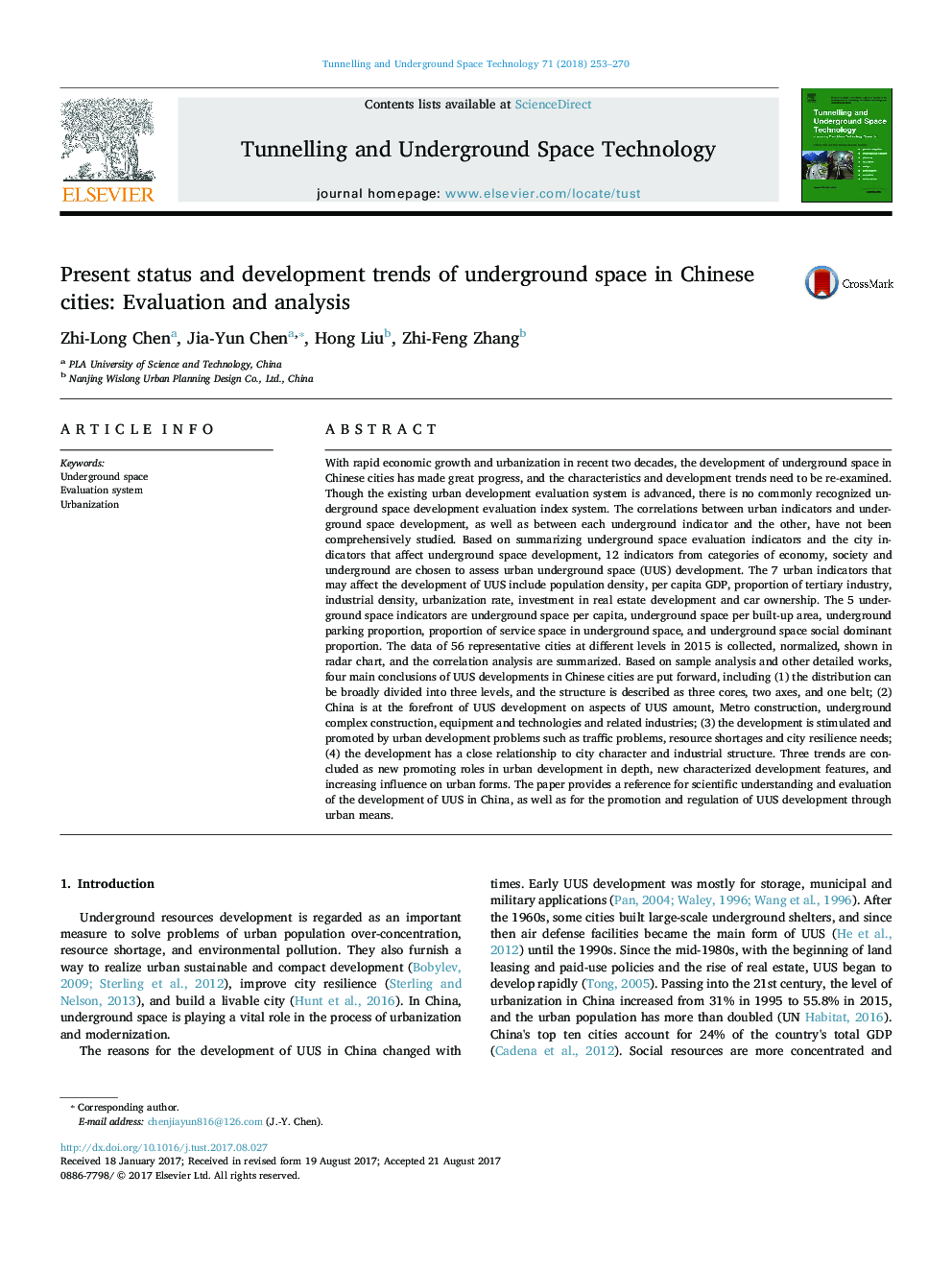| کد مقاله | کد نشریه | سال انتشار | مقاله انگلیسی | نسخه تمام متن |
|---|---|---|---|---|
| 4929195 | 1432275 | 2018 | 18 صفحه PDF | دانلود رایگان |
- Summarized underground space evaluation indicators and related city indicators.
- UUS evaluation system including 12 indicators of economy, society and underground.
- Analyzed correlation between indicators with data of 56 sample cities in China, 2015.
- Concluded the distribution, status, influencing factors of Chinese UUS developments.
- Three trends of promoting roles, new features and influences of UUS in China.
With rapid economic growth and urbanization in recent two decades, the development of underground space in Chinese cities has made great progress, and the characteristics and development trends need to be re-examined. Though the existing urban development evaluation system is advanced, there is no commonly recognized underground space development evaluation index system. The correlations between urban indicators and underground space development, as well as between each underground indicator and the other, have not been comprehensively studied. Based on summarizing underground space evaluation indicators and the city indicators that affect underground space development, 12 indicators from categories of economy, society and underground are chosen to assess urban underground space (UUS) development. The 7 urban indicators that may affect the development of UUS include population density, per capita GDP, proportion of tertiary industry, industrial density, urbanization rate, investment in real estate development and car ownership. The 5 underground space indicators are underground space per capita, underground space per built-up area, underground parking proportion, proportion of service space in underground space, and underground space social dominant proportion. The data of 56 representative cities at different levels in 2015 is collected, normalized, shown in radar chart, and the correlation analysis are summarized. Based on sample analysis and other detailed works, four main conclusions of UUS developments in Chinese cities are put forward, including (1) the distribution can be broadly divided into three levels, and the structure is described as three cores, two axes, and one belt; (2) China is at the forefront of UUS development on aspects of UUS amount, Metro construction, underground complex construction, equipment and technologies and related industries; (3) the development is stimulated and promoted by urban development problems such as traffic problems, resource shortages and city resilience needs; (4) the development has a close relationship to city character and industrial structure. Three trends are concluded as new promoting roles in urban development in depth, new characterized development features, and increasing influence on urban forms. The paper provides a reference for scientific understanding and evaluation of the development of UUS in China, as well as for the promotion and regulation of UUS development through urban means.
Journal: Tunnelling and Underground Space Technology - Volume 71, January 2018, Pages 253-270
